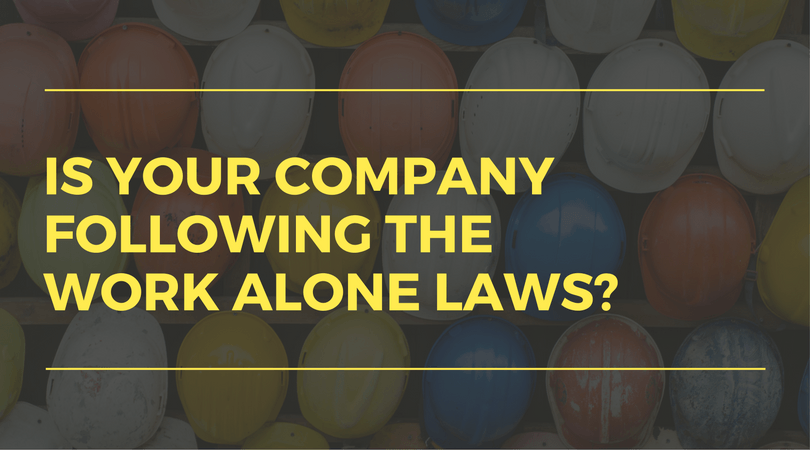Many employees are uncomfortable or even frightened in their workplace because they work alone. Canada’s Centre for Occupational Health and Safety has taken steps to protect these workers with Occupational Health and Safety Code 2009 Part 28. These lone worker laws say that the employer of anyone working alone must “provide an effective communication system…that includes regular contact by the employer…at intervals appropriate for the nature of the hazard associated with the worker’s work.”
Many provinces explain what that means in greater detail. Alberta, for example, explains that alone workers generally include five categories:
- Those handling cash (store clerks and taxi drivers)
- Those traveling to meet clients (social services workers)
- Those that do not routinely interact with the public (forestry or oil field workers)
- Workers that travel alone (truck drivers)
- Workers isolated from public view (security guards and custodians).
Employers of these workers must do a hazard assessment to determine if somebody would be on hand to help these workers in the event of an emergency. That could be a member of the public or a nearby competing business. Many companies are at risk for failing to comply with lone worker laws because they do not realize their workers are alone. For example, a security guard may be one of many on a site and therefore not alone, but if he or she goes on an isolated patrol then the guard probably becomes a lone worker in the eyes of the law. If a worker is truly alone, an employer must provide an appropriate communications mechanism.
A simple cell phone is usually not going to be enough to comply with lone worker laws. It is, of course, necessary for the lone worker to have the ability to call for help in an emergency. Employers must, however, also plan for the event of a worker being unable to call for help. This means an employer must initiate some type of regular contact to ensure the worker is safe. In some situations, simply texting the worker every hour to check in might be enough. In situations with more serious hazards, employers should consider a more robust system.
How to Comply with Lone Worker Laws
One of the best compliance systems on the market is the Lone Defender. This handheld device has a number of features that may allow it to meet applicable lone worker laws (check with a lawyer to be sure, of course!). The Lone Defender has built-in GPS, a panic button, two-way communication, and an RFID tag scanner. Perhaps most importantly for lone worker laws, the Lone Defender has automatic “man down” detection capabilities. That means if a security guard falls down on his or her patrol, the system can automatically create an alert to check in with the guard. If the guard fails to respond, help can be sent. This is much better than a system of regularly calling the guard throughout a shift. For one thing, it is easier. More importantly, however, an employer can find out there is trouble as soon as it occurs instead of waiting until the next check in to realize an employee has been injured.








































